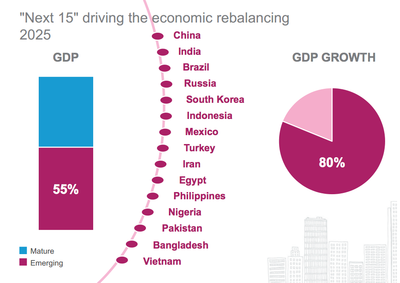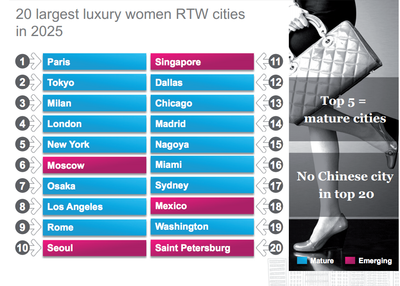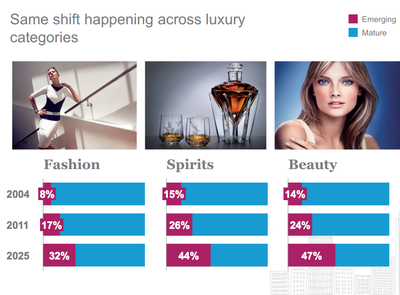[SINGAPORE] Firms have ramped up their geographical diversification efforts in recent months in a bid to escape Singapore's prohibitive property cooling measures. In the opening weeks of January alone, Aspial Corporation unveiled two acquisitions in Australia, Keppel Land agreed to purchase land in Indonesia and CapitaLand picked up yet another plot in China.
Australia, the United Kingdom and the United States have been firms' favourite hot spots. Several companies, including Hiap Hoe, AIMS AMP Capital Industrial Reit, Aspial, and Suntec Reit, picked Australia for their first overseas acquisitions.
Hiap Hoe, for instance, bought a 40,489-square-foot site in Melbourne, which it intends to develop into a 425-unit project, and then quickly went on to snap up a commercial building at 380 Lonsdale Street and a retail and office property at 206 Bourke Street. The three acquisitions cost the company about A$177.6 million (S$198.4 million). Aspial bought a freehold commercial building in Melbourne for A$41.5 million, soon followed by a separate commercial building also in Melbourne for $42.3 million. It intends to redevelop the latter site into what will be the tallest building in the city, subject to aviation clearance.
Among Reits, AMP Capital picked up a 49-per cent stake in Optus Centre, a business park in Sydney, for A$184.4 million, while Suntec Reit bought 177-199 Pacific Highway, a freehold land and property with a 31-storey Grade A commercial tower that is targeted for completion in early 2016. These were the first overseas acquisitions for both Reits.
Andrew Bird, chief investment officer (property) at AMP Capital, said he expected investment interest in Australian property to continue to remain high, particularly for the office and residential sector.
"The attraction of Australia (lies in its) high yield relative to other markets globally," said Mr Bird, noting that yields for prime property in Australia are about 6 per cent.
"When global investors look at property markets on a relative basis, they look at Australia and they see the high starting yield. And while the economy has softened a bit - the mining boom has slowed down - we are still looking at GDP growth of about 2.5 to 3 per cent," said Mr Bird.
The above two factors, plus sustained population growth through organic growth and immigration, are reasons why interest in Australia will likely remain high. That developers are looking elsewhere is perhaps not surprising, given plunging sales at home.
"New and adjusted local government policies in recent years that were meant to prevent a real estate asset bubble from forming and bursting, have, somewhat, limited the opportunities here for investors and developers," noted Chia Siew Chuin, director for research and advisory at Colliers International. "In addition, the property playing field in Singapore has matured with many players bringing more diversity into the game, hence increasing the level of competition," she said.
According to data released by DTZ, close to US$3.5 billion was invested overseas by Singapore-based investors in the first nine months of 2013.
Notably, this figure does not take into account GIC's 50 per cent stake in London's Broadgate business district, a retail and commercial estate of 17 office buildings. While the consideration for GIC's purchase was not disclosed, reports placed the price tag at around £1.7 billion (S$3.56 billion) - believed to be a record for a central London property.
London has emerged a popular investment spot thanks to its reputation as a stable financial centre, said CBRE's Chris Brooke, executive managing director for Asia.
"Asian developers buying institutional Grade A office assets in London are driven by the feeling that London is a stable financial centre, offers reasonable yield, and is a long-term core holding. There is also the desire to have a flagship property in London," said Mr Brooke.
"(On the residential front) it is a good market to be building high quality residential homes notwithstanding the capital gains tax. The feeling is that demand will remain, even though it may trail off a little bit," he added.
City Developments Limited (CDL) and Oxley Holdings are among the firms that made forays into the London market in the last 12 months - CDL via a freehold plot near Harrods in Knightsbridge, which it intends to redevelop, and Oxley Holdings via a mixed development site at London's Royal Wharf.
Other firms also entered the fray. Local construction group Lum Chang added a London hotel near the tourist attractions of Hyde Park and Kensington Gardens to its growing list of London properties last year.
Property in the US also received its fair share of interest. SingHaiyi group - previously known as SingXpress Land - snapped up two distressed commercial projects in the US in the last few months, after Neil Bush, the brother of former US president George W Bush, was brought on board as non-executive chairman of SingHaiyi.
The two projects, Tri-County Mall in Ohio and Vietnam Town in California, were picked up for US$45 million and US$33.1 million respectively. Earlier this month, the group said that it is in talks to acquire another two to three assets in America.
Separately, OUE picked up California's tallest building - the US Bank Tower in Los Angeles - for US$367.5 million, while earlier this year GIC sealed a deal to buy office space in New York's Time Warner Centre with two partners, the Abu Dhabi Investment Authority and US real estate firm Related Companies, for US$1.3 billion.
While many local firms have been acquiring plots overseas, one of the most active is local developer Oxley Holdings, which now has ventures in Malaysia, Cambodia and China.
Following its first move abroad in May last year, in which it bought a firm with rights to a mixed-use site in Kuala Lumpur, Oxley Holdings has assembled an impressive portfolio of plots through a combination of joint ventures, development right agreements and acquisitions.
In January, the group said it signed a framework agreement with Sepang Goldcoast and Sepang Bay to develop land. The latter two hold interests in two parcels of 99-year-leasehold land with an aggregate area of about 47.3 hectares in Sepang. The joint-venture agreements entitle Oxley Treasure to 85 per cent of the gross development value of the developments on the land.
As to the future for acquisitions, some experts urge caution as the global economic recovery proceeds.
Speaking on the sidelines of the DTZ Annual Property Outlook Seminar 2014 earlier this month, Dominic Brown, head of South East Asia/Australia and New Zealand Research, said: "From an investment perspective, the main point is that (globally) property is not expected to get any more attractive on a relative value basis in the near term ... This stems from the fact that upside risks are now increasingly likely as the global economic recovery starts to gather momentum. This is a big shift from last year when a lot of focus was on what might happen if the eurozone broke up."














